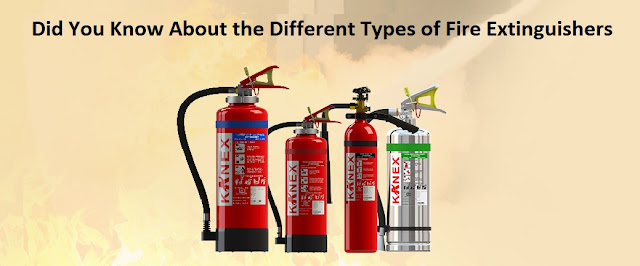Knowing how to use a Fire Extinguisher is an essential skill. After all, you do not want to be caught unprepared when a fire does take place. However, did you know that fire extinguishers come in different types?
Fire can be caused due to a variety of factors. A single type of extinguishing agent is not enough to combat all of them. In fact, it might even be dangerous. For example, fires caused by electricity can never be extinguished by water. Moreover, using water is more dangerous as it can lead to electrocution.
Fire can be caused due to a variety of factors. A single type of extinguishing agent is not enough to combat all of them. In fact, it might even be dangerous. For example, fires caused by electricity can never be extinguished by water. Moreover, using water is more dangerous as it can lead to electrocution.
As such, Fire Extinguishers are classified according to the class of fire they can combat. These classes of fire are classified with letters, A to F. In some regions around the world, a different set of letters is used. Here is the classification.
- Class A: This includes flammable solids such as paper and wood
- Class B: This includes flammable liquids such as oil and paraffin
- Class C: This includes flammable gases such as methane and propane
- Class D: This includes metals such as magnesium and aluminum
- Class E: This includes electrical fires
- Class F: This includes cooking grease and oil fires
As mentioned previously, different kinds of fires need different fire extinguishers. This is to ensure that the right firefighting agent is deployed for the right kind of fire. Modern Fire Extinguishers can have a combination of different chemicals which make it easier to combat fires. Here are the most widely used.
Water and Foam Fire Extinguisher:
This category of fire extinguishers works by eliminating the heat aspect of the fire. The foam will also remove oxygen from the fire. It is important to know that Fire Extinguishers containing water should only be used for fighting fires of Class A. They must never be used for Class B or Class C as it can end up increasing the fire and create a more dangerous situation.
Carbon Dioxide:
This type of Fire Extinguishers will remove the oxygen and help in getting rid of the fire. They can also help eliminate the heat with its cold discharge. These extinguishers should be used for Class B and Class C fires.
Dry Chemical:
They work mainly by stopping the chemical reaction that is causing the fire. These days, a multipurpose variety of dry chemical is commonly used in Fire Extinguishers. This type is capable of fighting 3 different classes of fires: A, B and C. This type may also create a barrier between the fuel and oxygen in Class A type fires.
The regular variety of dry chemical should only be used for Class B and Class C.
Wet Chemical:
This is a new kind of agent that works by eliminating the heat. At the same time, it will also prevent the reigniting of the fire by acting as a barrier between oxygen and the fuel. This agent is mainly seen in Fire Extinguishers used for fighting Class F type fires.
Next time you face a fire, pay attention to the label of the Fire Extinguisher. Make sure that the class mentioned corresponds to the type of fire you are about to fight.
Did You Know About the Different Types of Fire Extinguishers?
 Reviewed by Kanex Fire
on
July 17, 2020
Rating:
Reviewed by Kanex Fire
on
July 17, 2020
Rating:
 Reviewed by Kanex Fire
on
July 17, 2020
Rating:
Reviewed by Kanex Fire
on
July 17, 2020
Rating:













No comments: